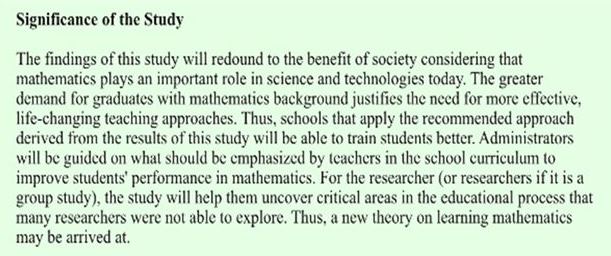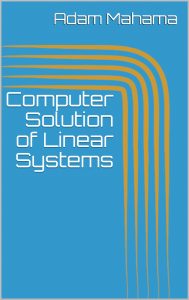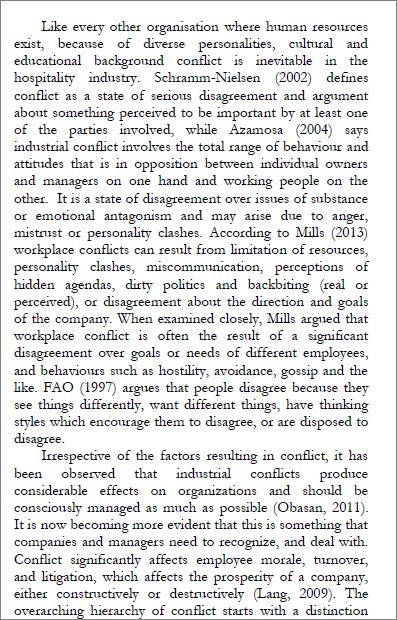In scholarly writing, it is both a moral & legal requirement to properly acknowledge someone else’s ideas or words you have used in your research project. Failure to acknowledge your source of information, you may be accused of plagiarism and infringing copyright.
The American Psychological Association (APA) referencing styles is a widely used standardized style in scholarly writing to acknowledge the source of information used in research. By referencing properly, it demonstrates your scholarly honesty in having undertaken research on your topic and having located relevant information.
Mahama suggested that ….
This quotation, otherwise known as direct quotation refers to materials you quote that are less than 40 words. One common practice for short quotation is to place the author and year before the quotation. The page appears at the end of the quotation. Place the words in double quotes.
According to Mahama (2011), “the general feeling on the focus of integration of ICT into Junior High School education is more in the formal school arrangement” (p. 35).
When the quote is at least 40 words, it is considered long quotation. It is indented 5 to 7 spaces (1.27 cm) and set at double spacing. The words are not placed in quotes.
Mahama (2011) stated in his findings that the general feeling on the focus of integration of ICT into junior high school education is more in the formal school arrangement. The study identified the Internet cafés as the most significant location that influenced usage of the internet among JHS students. (p. 35)
Mahama (2011) stated in his findings that the general feeling on the focus of integration of ICT into junior high school education …
According to Annan and Mahama (2000), there are difficulties involved in descriptive survey …
Earlier studies had shown that there are difficulties involved in descriptive survey (Anan & Mahama, 2000).
More than Two Authors
When three to five authors are involved, you cite in your first citation all their surnames followed by year of publication. In subsequent citations, you cite only the surname of the first author followed by the Latin word “et al.” But when the subsequent citations are within the same paragraph, you omit the year for all the citations. When more than five authors are to be cited, use surname of the first author followed by “et al.” in both the first and subsequent citations. Do not italicise et al. in any citations.
Example
The available research on students’ use of ICT … traditional educational system (Mioduser, Nachmias, Lahav & Oren, 1998).
Subsequent citation reads as:
Previous studies (Mioduser et al., 1998) on Internet use showed that …
Organisation as Author
When organisations are presented as authors in a publication, the full expression other than the initials of the body is cited. In subsequent citations, only the initials are used.
Example
In furtherance with the new ICT curriculum, all students … (Ministry of Education [MOE], 2009).
Subsequent citation reads as
The MOE (2009) …
Two or More Works within the Same Parentheses
When you cite works of two or more sources within the same parentheses, sort the surnames of the authors alphabetically and separate the citations with semicolon (s).
Example
… about the phenomenon studied (Best & Kahn, 1993; Gay, 1990).
An Author with Several Works with Same Date
When you cite several works by the same author with the same year of publication, you must introduce the letters a, b, c, etc. after the year of publication.
Example
Adam authored the three books in 2010, (a) ABC of Excel, (b) Data Analysis, and (c) ABC of Database. The in-text citation, after sorting the titles alphabetically is presented as:
A lot of studies have been undertaken on data collection instrument (Adam, 2010a, 2010b, 2010c).
A Secondary Source
We want to assume that you read the book of Amedahe he published in 2002 where he referenced previous studies undertaken by Glass and Hopkins on descriptive statistics. Amedahe’s material is what you are privy to and therefore becomes the secondary source.
Example
The in-text citation of the given source is presented as:
According to Glass and Hopkins (as cited by Amedahe, 2002), descriptive statistics …
The citation then appears in the reference list entry as:
Amedahe, F. K. (2002). Fundamentals of educational research methods, mimeograph. Cape Coast: University of Cape Coast.
Reference List
For the reference list, use (a) hanging indentation for each reference list, (b) sentence case for the title of a non-periodic and title case for the article of a journal, and (c) double spacing (Figure 9).
Reference List
Mahama, A. (2011). In search of truth. Ghanaian Psychologist, 48, 574-576.
Amedahe, F. K. (2002). Fundamentals of educational research methods, mimeograph. Cape Coast: University of Cape Coast.
Figure 10: A sample of reference list
To download sample of an indented reference list click
Periodicals (journal with one author)
Mahama, A. (2011). In search of truth. Ghanaian Psychologist, 48, 574-576.
Journal Article (with two authors)
Hussein, R., & Abu, S. (2009). The life of the companions. Islamic Perspective, 45, 100-136.
Non-Periodical (books)
Mahama, A., (1997). The Muslim family life. Ghana: The Call Consult.
Note: If the publication has no city of publication, then use the country as shown in the given example.
Book with Edition
Bowling, A. (2002). Research methods in health – investigating health and health services (2nd ed.). Buckingham: Open University Press.
Book with Editor
Boadie, J. (Ed.). (2009). The Internet in everyday life. Accra: Islamic University College, Ghana.
Daily Newspaper Article (with an author)
Wireko, V. (2011, December 14). Have we not done enough harm to our best talents? Daily Graphic, (No. 18716), p.7.
Daily Newspaper Article (no author identified)
In the reference of this type of article, you mention only the title of the article if no author is identified and italicize the newspaper name.
Example
Private schools urged to run SSS courses. (1999, August 14). Daily Graphic, (No. 14769), pp. 1, 3.
Encyclopaedia or Dictionary
When dealing works with a large editorial board, you list the name of the lead editor, followed by et al.
Example
Venes, D.(Ed.), et al. (2001). Taber’s cyclopaedic medical dictionary (19th ed.). Philadelphia: F. A. Davis.
Online Dictionary Sources
When you cite an online dictionary do the following: (a) Italicize the source of the cited word after In, (b) Insert the date the dictionary was published, or revised. In case the date is not so obvious use the copyright date, (c) Provide the full uniform resource locator (URL) and the date the material was retrieved.
Example
Plagiarize.(2008). In Merriam-Webster’s online dictionary (11th ed.). Retrieved December 8, 2011, from http://www.merriam-webster.com/dictionary/plagiarize
Internet Articles Based on a Print Source
Use the same basic primary journal reference for online articles retrieved. If the article is viewed only in its electronic form, introduce square brackets [ ] after the article.
Example
Mangesi, K. (2007). ICT in education in Ghana, survey of ICT education in Africa: Ghana country report. [electronic version]. The World Factbook. April 2007. Retrieved February 21, 2010 from http://www.infodev.org/ict4edu-Africa
Article in an Internet-Only Journal
Newmarch, E., Taylor-Steele, S., & Cumpston, A. (2000). Women in IT – What are the barriers? Network of women in further education conference. Retrieved January 12, 2011, from http://www.dest.gov.au/archive/ research/docs/womenin_it
References
Universal College of Learning. (2017). A guide to APA referencing style (6th ed.). Retrieved on April 30, 2019 from https://www.google.com/url?sa=t&source=web&rct=j&url=http://student.ucol.ac.nz/library/onlineresources/Documents/APA_Guide_2017.pdf&ved=2ahUKEwibtZith8HiAhWUonEKHaifBwUQFjAAegQIAhAB&usg=AOvVaw10KdXV9EjnRdfGrPWlW_Cd
American Psychological Association. (2019). Publication manual of the American Psychological Association (6th ed.). Washington, DC: American Psychological Association.
How to Acknowledge this Post
The Call Info. (January 25, 2020). Referencing styles [Blog post]. Retrieved from https://research.thecallinfo.com/referencing-styles/
 Fig 1: Sample of significance of the study
Fig 1: Sample of significance of the study




 Figure 3: The title page
Figure 3: The title page



 Figure 8: A sample formatted table
Figure 8: A sample formatted table
 Figure 9: A sample figure
Figure 9: A sample figure 

